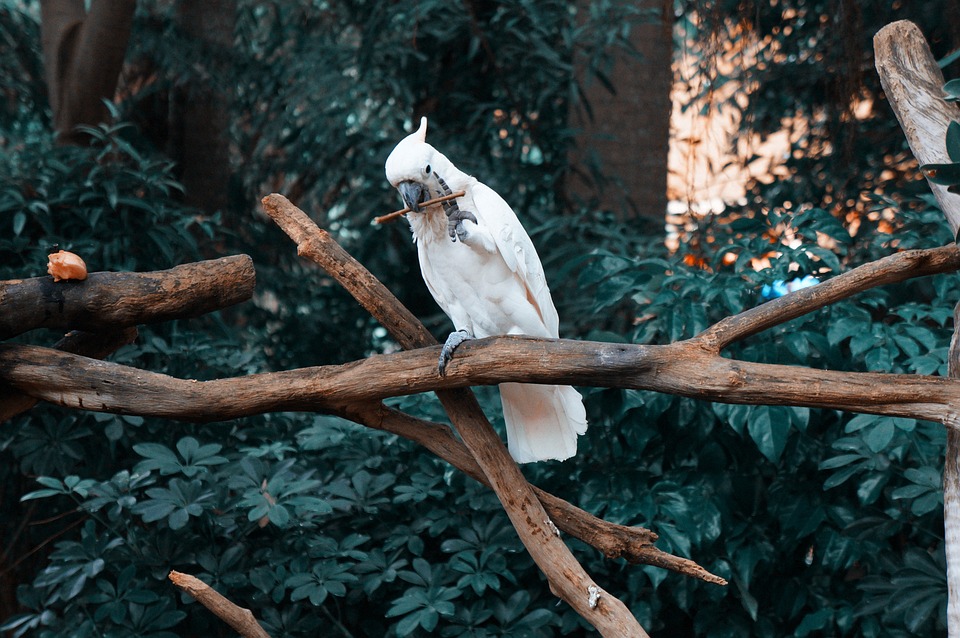Parrots are highly intelligent and social creatures known for their vibrant feathers, exceptional mimicry skills, and unique personalities. However, understanding their behavior can be a complex task. One crucial aspect to consider is their dietary preferences and the impact of different food presentations. In this article, we will delve into the fascinating world of parrot behavior and explore how various food presentations can influence their well-being.
Parrots, like humans, have diverse taste preferences and can be quite selective when it comes to their diet. The way food is presented can significantly impact their behavior, including their feeding habits, foraging skills, and overall mental stimulation. Let’s explore the different food presentations and their effects on parrot behavior.
1. Whole Foods vs. Chopped Foods:
– Whole Foods: Offering whole foods like large fruits, vegetables, or nuts can provide parrots with opportunities to engage in natural foraging behaviors. Peeling, tearing, and breaking apart these foods mimic what they would encounter in the wild, stimulating their instincts and keeping them mentally active.
– Chopped Foods: On the other hand, chopping foods into smaller, bite-sized pieces can be beneficial for parrots that struggle with beak strength or have difficulty manipulating larger items. This presentation allows for easier consumption and may be suitable for parrots with certain physical limitations.
2. Food Placement and Enrichment:
– Hanging Foods: Suspending food items from ropes or attaching them to toys can encourage parrots to engage in physical activity while they eat. This presentation promotes natural foraging behaviors, as parrots have to work to obtain their food, providing mental stimulation and preventing boredom.
– Puzzle Feeders: Introducing puzzle feeders or foraging toys with hidden compartments can challenge parrots to solve problems and work for their meals. This presentation not only keeps them mentally stimulated but also prevents overeating by slowing down their consumption.
3. Variety and Food Rotation:
– Offering a diverse range of foods is essential for parrots’ nutritional needs and behavioral enrichment. Regularly rotating their diet not only ensures they receive balanced nutrition but also prevents them from becoming bored with repetitive meals. Experiment with different fruits, vegetables, nuts, and seeds to keep their diet exciting and engaging.
Now, let’s address some frequently asked questions about parrot behavior and food presentations.
Q1. Should I be concerned if my parrot is a picky eater?
A1. Parrots, like humans, can develop food preferences. However, it is crucial to ensure their diet is nutritionally balanced. Consult with an avian veterinarian or an avian nutrition specialist to create a suitable diet plan for your picky eater.
Q2. How can I encourage my parrot to try new foods?
A2. Patience and persistence are key when introducing new foods. Start by offering small amounts of the new food alongside familiar ones. Additionally, modeling eating behaviors and showing enthusiasm can influence your parrot to try new foods.
Q3. Is it necessary to provide foraging opportunities for my parrot?
A3. Yes, foraging is an important aspect of a parrot’s natural behavior. It helps keep them mentally stimulated, prevents boredom, and encourages physical activity. Incorporating foraging toys or hiding treats in various places can provide these opportunities.
Q4. Can the food presentation impact my parrot’s mental health?
A4. Yes, a monotonous or unstimulating diet can lead to behavioral issues such as feather plucking, aggression, or depression. Providing a varied diet and engaging food presentations can significantly contribute to your parrot’s mental well-being.
In conclusion, understanding parrot behavior involves recognizing the impact of different food presentations. By offering a variety of foods, utilizing enrichment techniques, and encouraging natural foraging behaviors, you can enhance your parrot’s mental stimulation, physical health, and overall happiness. Remember to consult with avian experts to ensure your parrot’s dietary needs are met and to address any specific concerns you may have.









